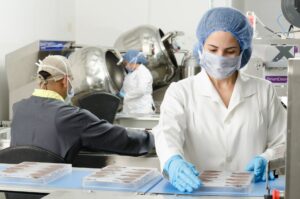
While statistically rare, testicular cancer affects tens of thousands of American men and reshapes their lives, even if treatment is successful. Modern treatment options make the disease relatively low risk – if it is diagnosed early.
What Is Testicular Cancer?
Testicular cancer is a type of cancer that affect the testes. In most cases, the symptoms of testicular cancer include:
- A lump on either testicle
- Dull ache in stomach and groin
- Pain in the scrotum or testicle
- Back pain
What Causes Testicular Cancer?
There is no immediate cause linked to the disease, making prevention difficult. Most cases start in the cells that produce sperm. There is little evidence connecting sperm production with developing testicular cancer, though it may be a contributing factor in the demographic most affected by this type of cancer. Young men tend to see the most diagnoses in the US, usually between the ages of 18-35.
Men should always take to their doctor about changes in the size, shape, or sensitivity of their testicles, especially if they or men in their family have a history of cancer diagnosis.
Related Content: How Much Exercise Do Adults Need?
What Are Testicular Cancer Risk Factors?
The most common conditions linked to an eventual diagnosis include:
Cryptorchidism – Known as an undescended testicle, increases the risk of developing cancer. In some cases, undescended testes will be surgically moved to the scrotum, a procedure that appears to increase the risk of diagnosis.
Age – Teen men and young adult men between the ages of 15 and 35 see the highest rates of testicular cancer, though men of any age can experience it.
Race – White men receive a testicular cancer diagnosis at higher rates than other races.
Genetics – Testicular cancer is believed to be primarily a genetic disease. Talk to family members to learn about any history of cancer and share that information with your healthcare provider.
What All Men Should Know
Men improve their chances of identifying symptoms and seeking medical help when they understand risk facts and the basics of the disease.
There are two types of cancer. Seminoma spreads throughout the body relatively slowly and is responsive to the most common kind of treatment, which is focused on radiation. Nonseminoma spreads quickly, though it is also treatable by radiation. There are several subtypes that affect the testicles differently.
Not everyone experiences symptoms. Some men have no physical symptoms before they are diagnosed, usually through a blood test or physical exam.
Surgery is the first treatment. Testicle removal is the most effective treatment option. If cancer has already spread to other parts of the body, radiation or chemotherapy treatment may be required and is often very effective.
Fighting Cancer Depends on Education And Access To Care
Many cancers, including testicular cancer, are relatively easy to treat and cure if cases are identified early. By expanding affordable and inclusive access to healthcare resources, including preventative visits and annual examinations, we can reduce the cancer rate and improve the survival rate for even the most harmful types of cancer. From prevention education to expanded care, cancer prevention can’t wait.

Leave A Comment
You must be logged in to post a comment.